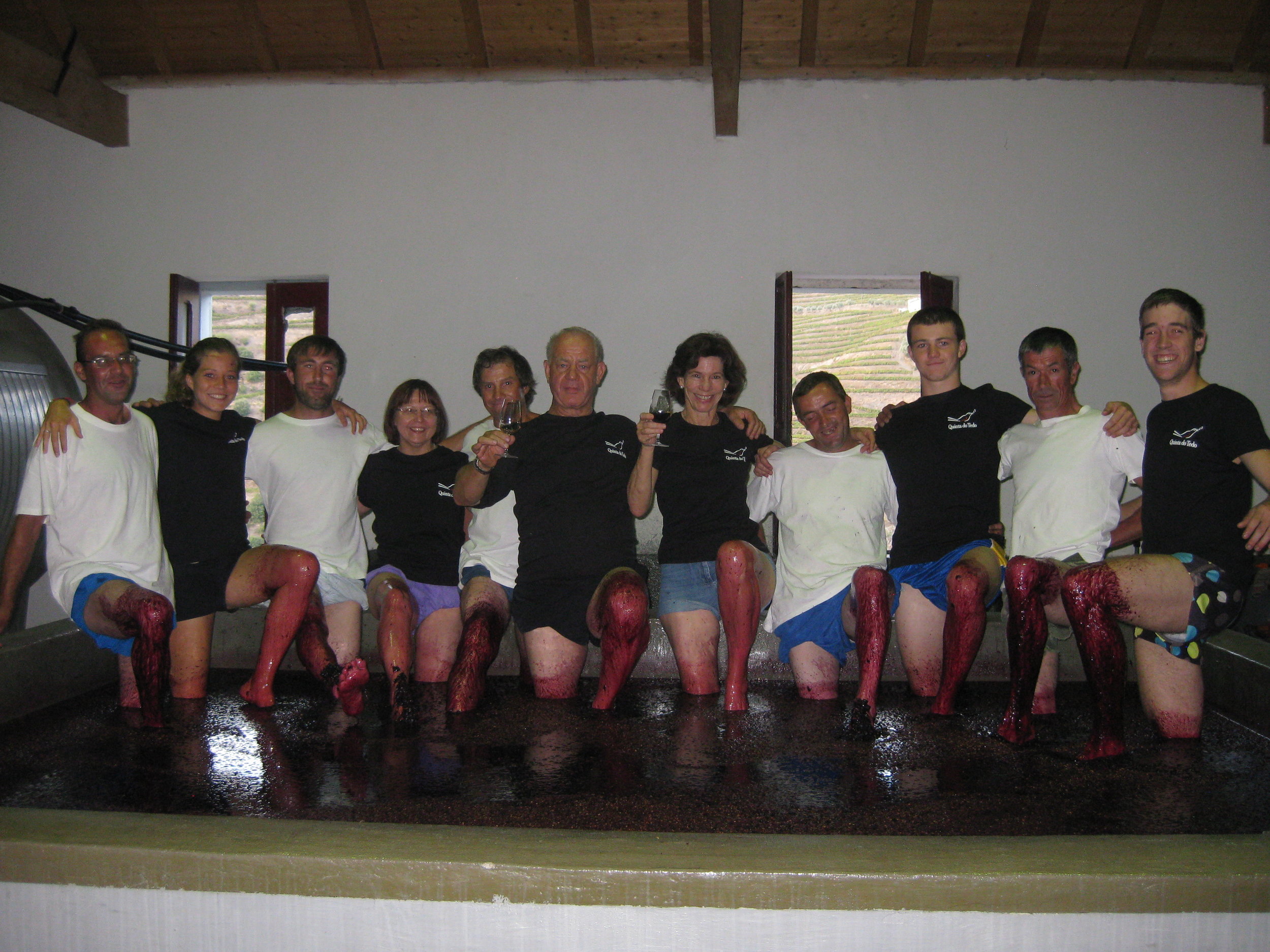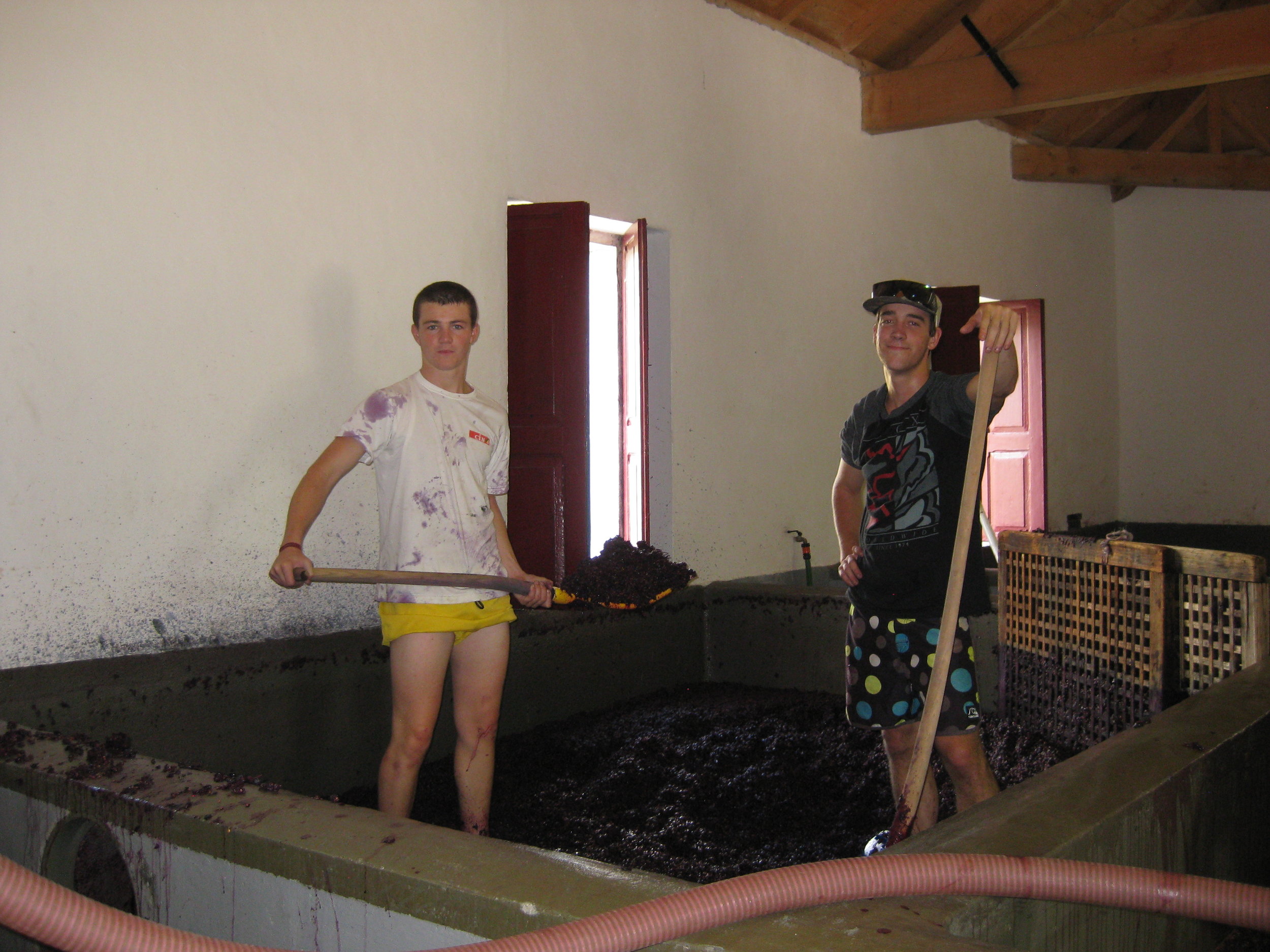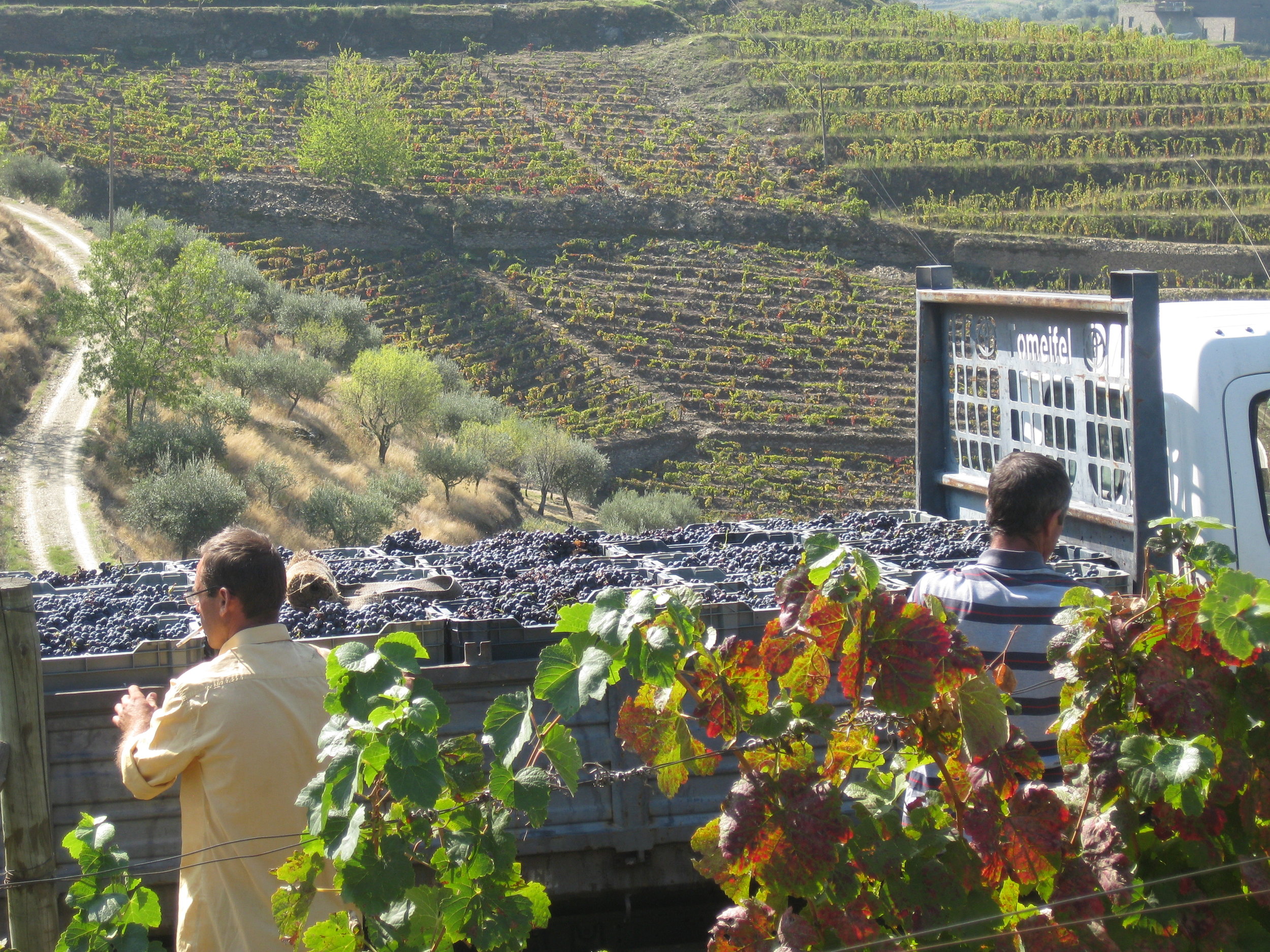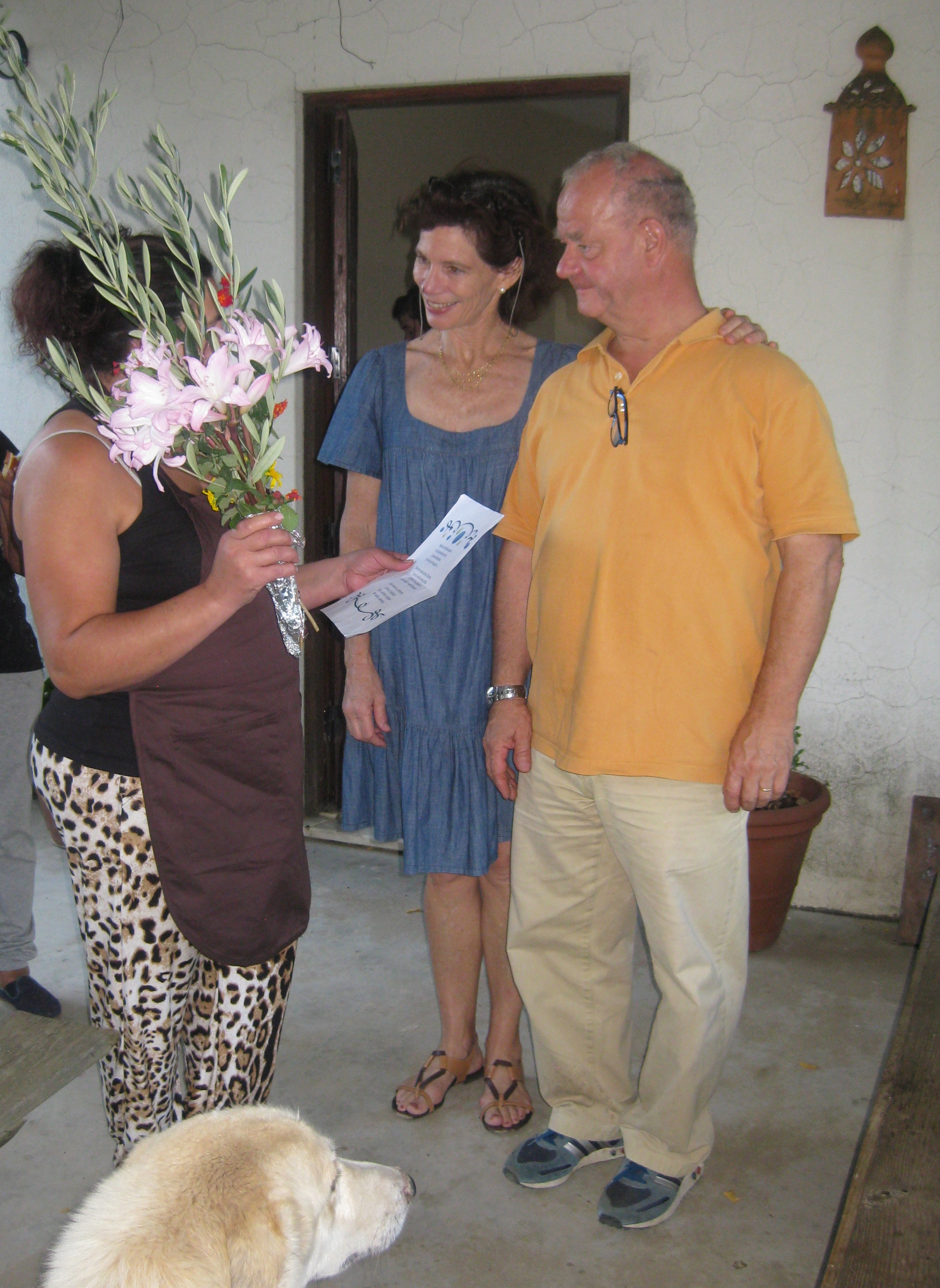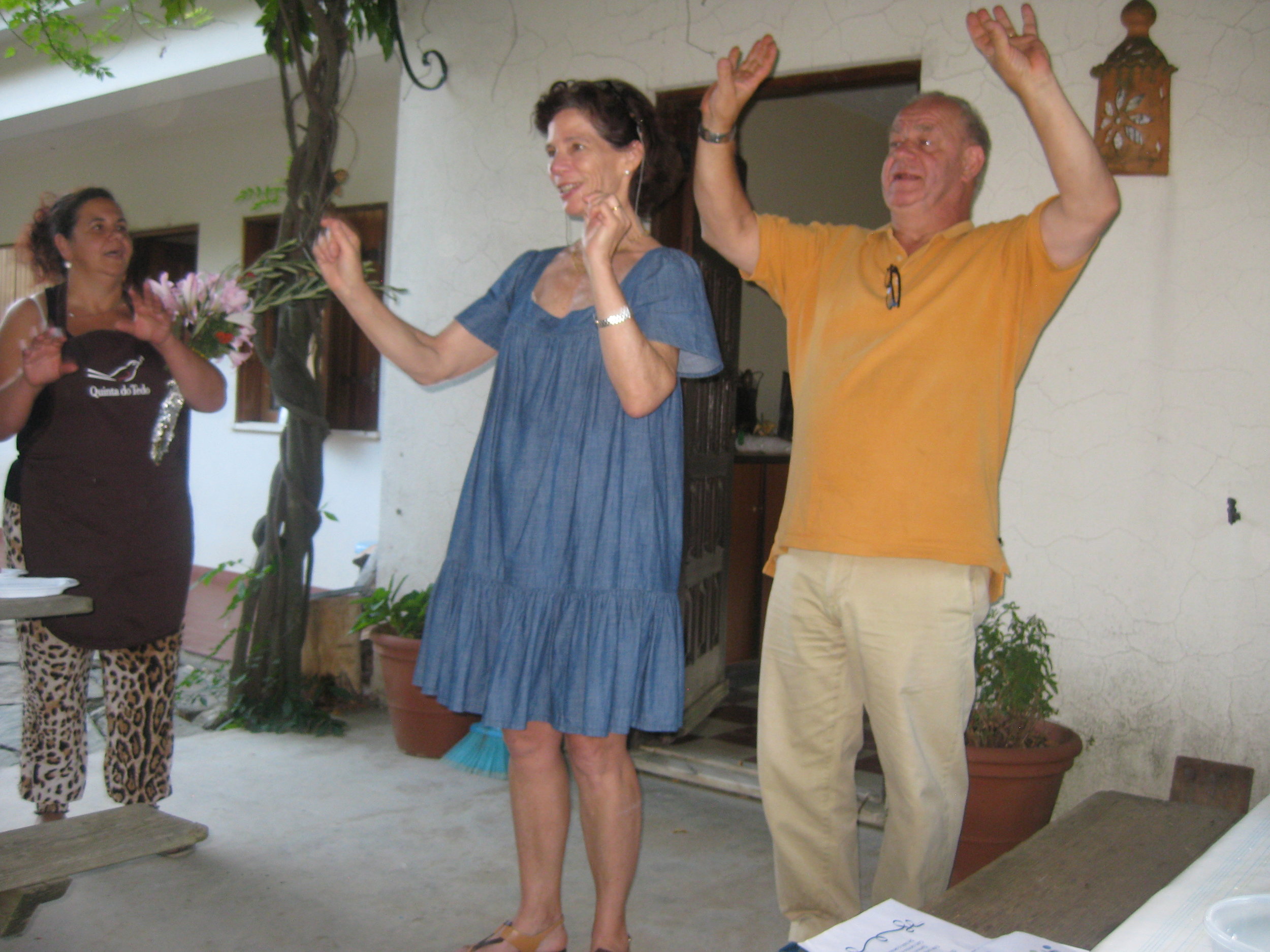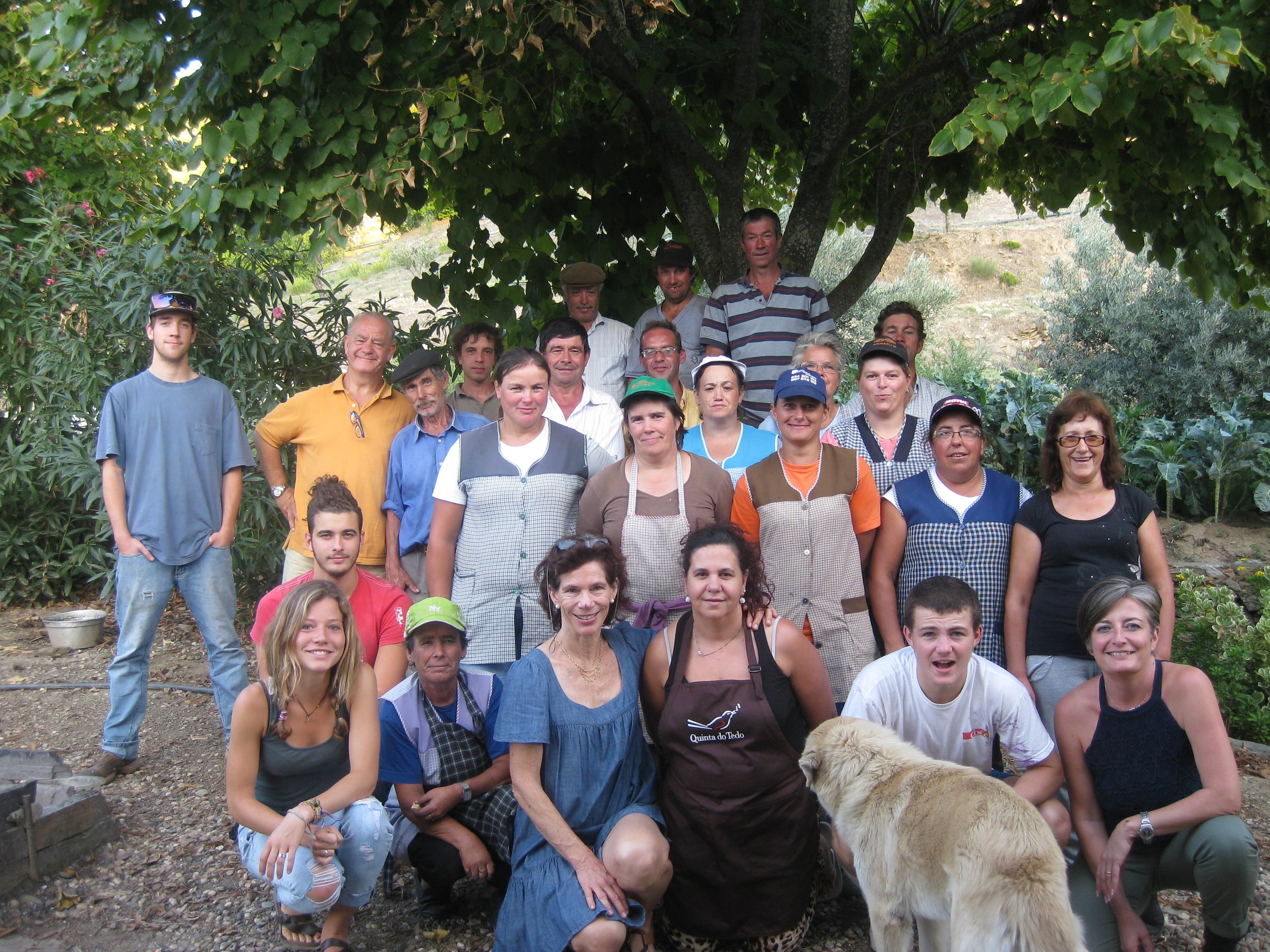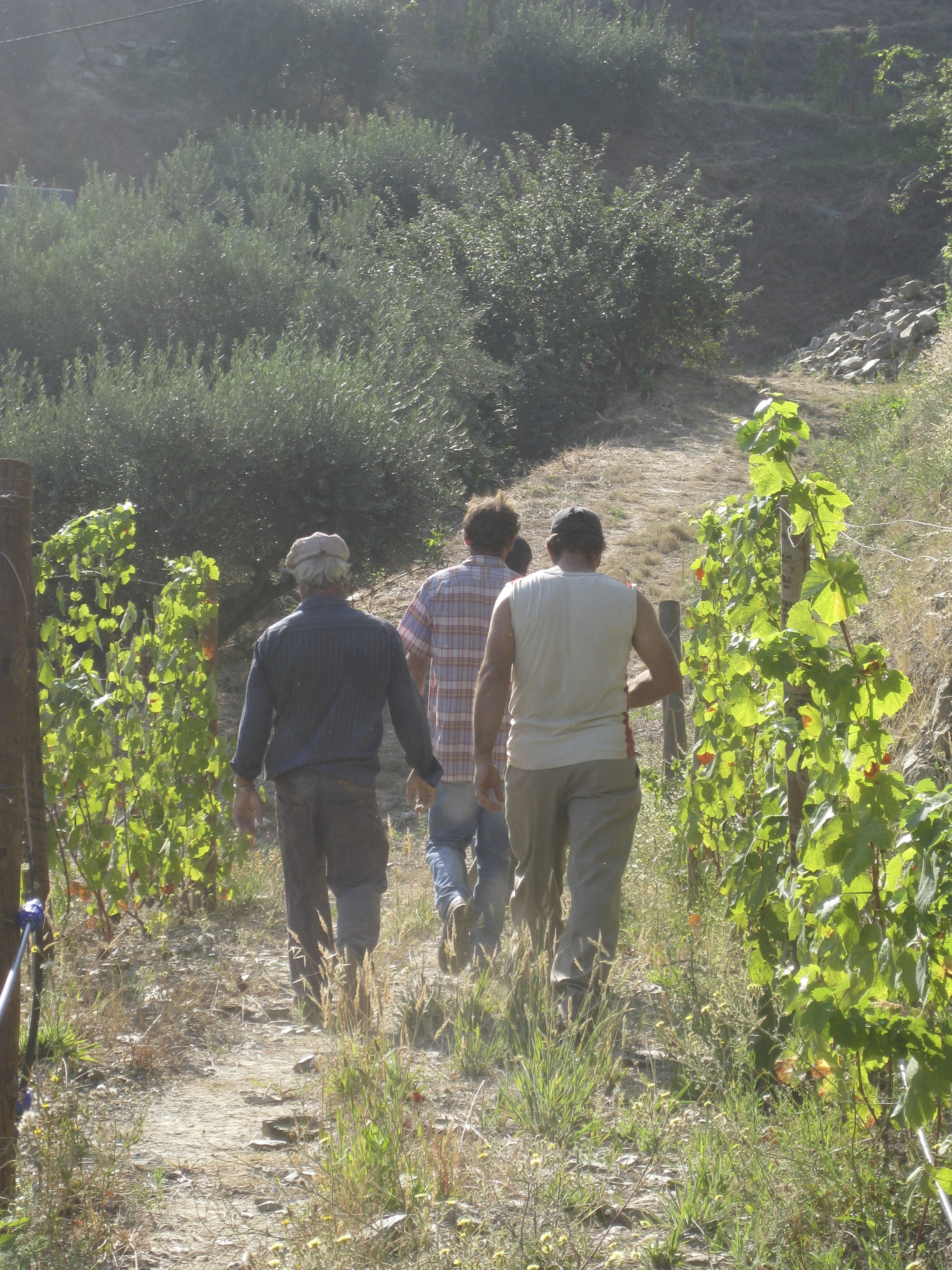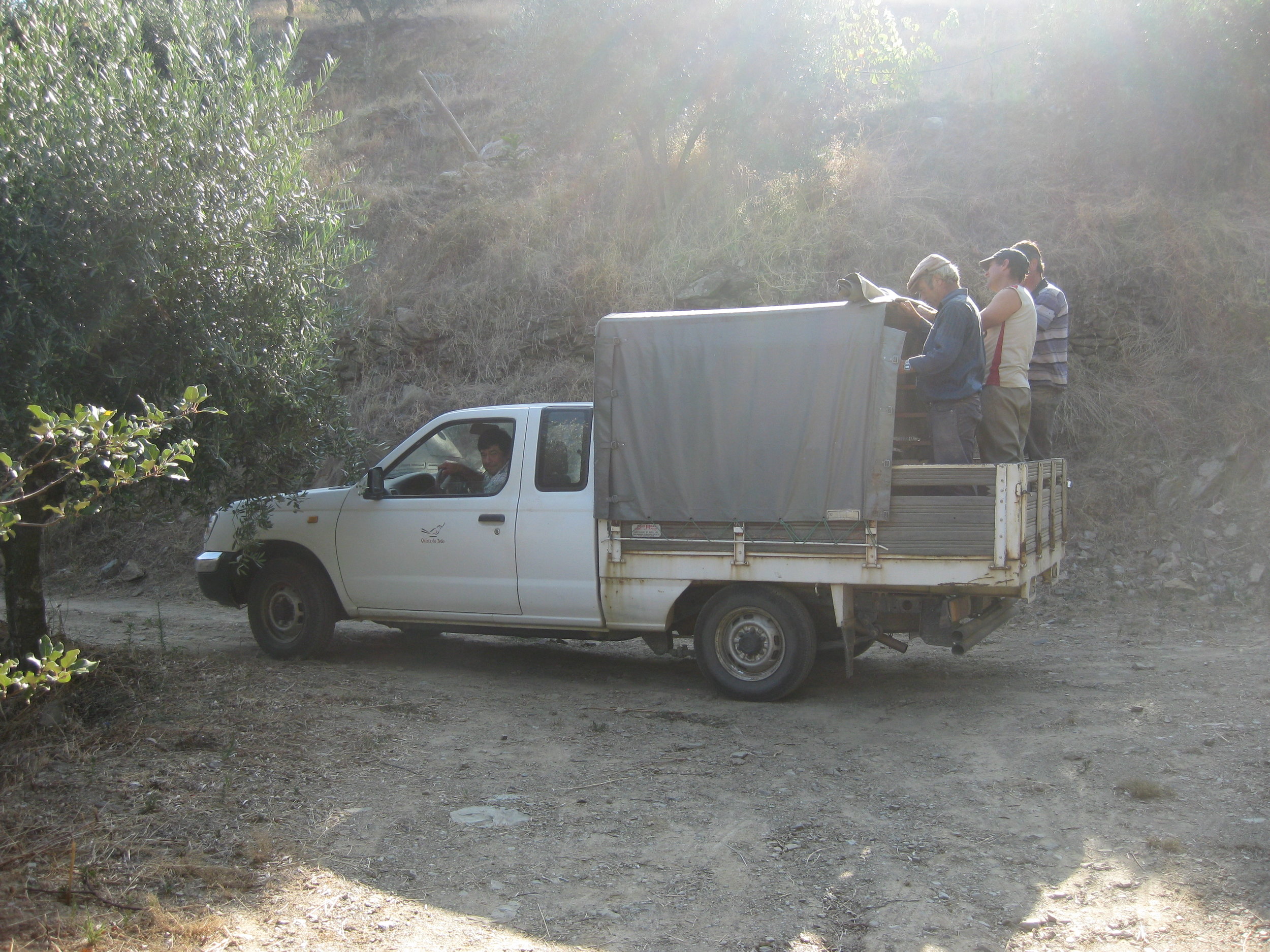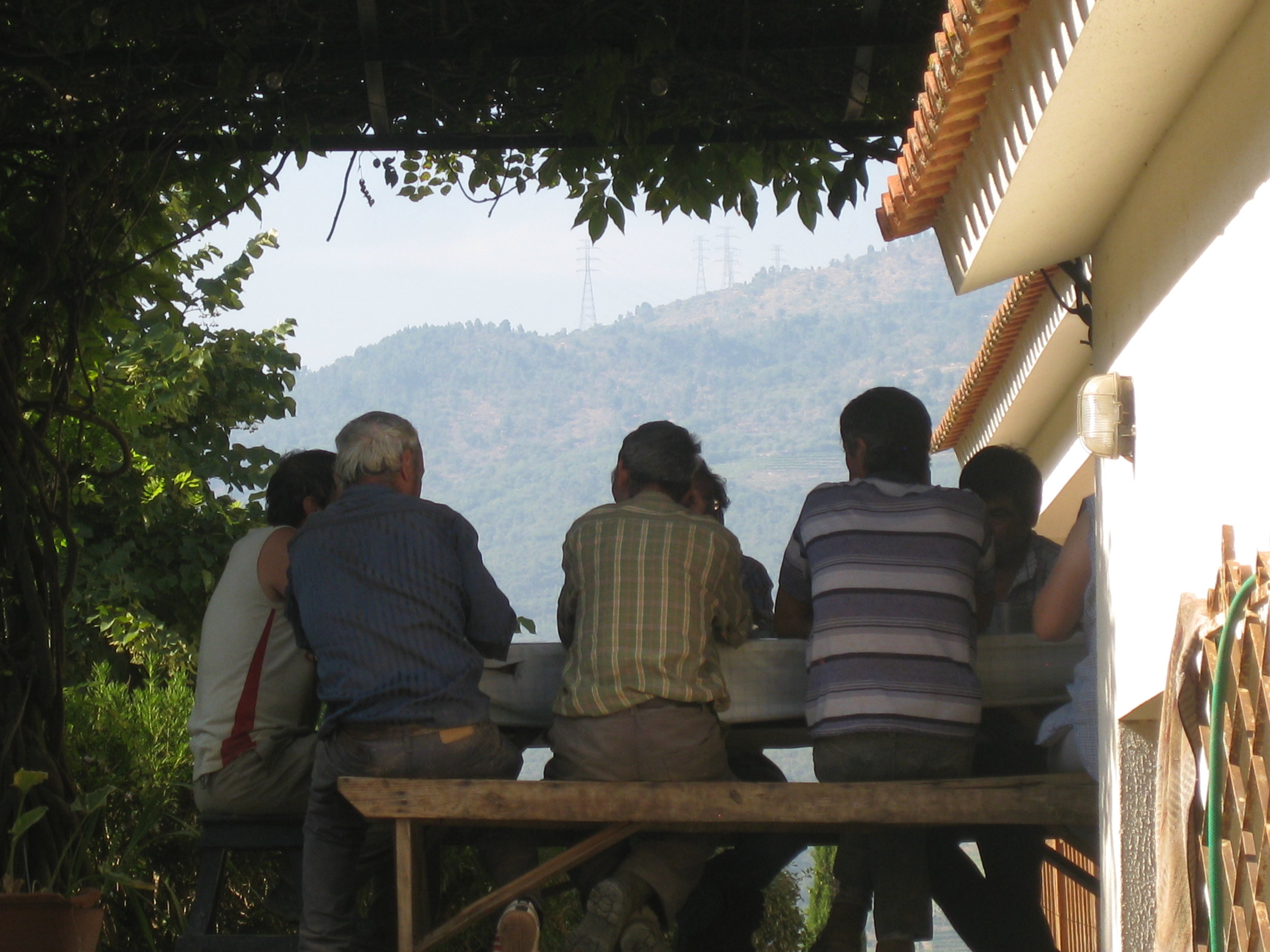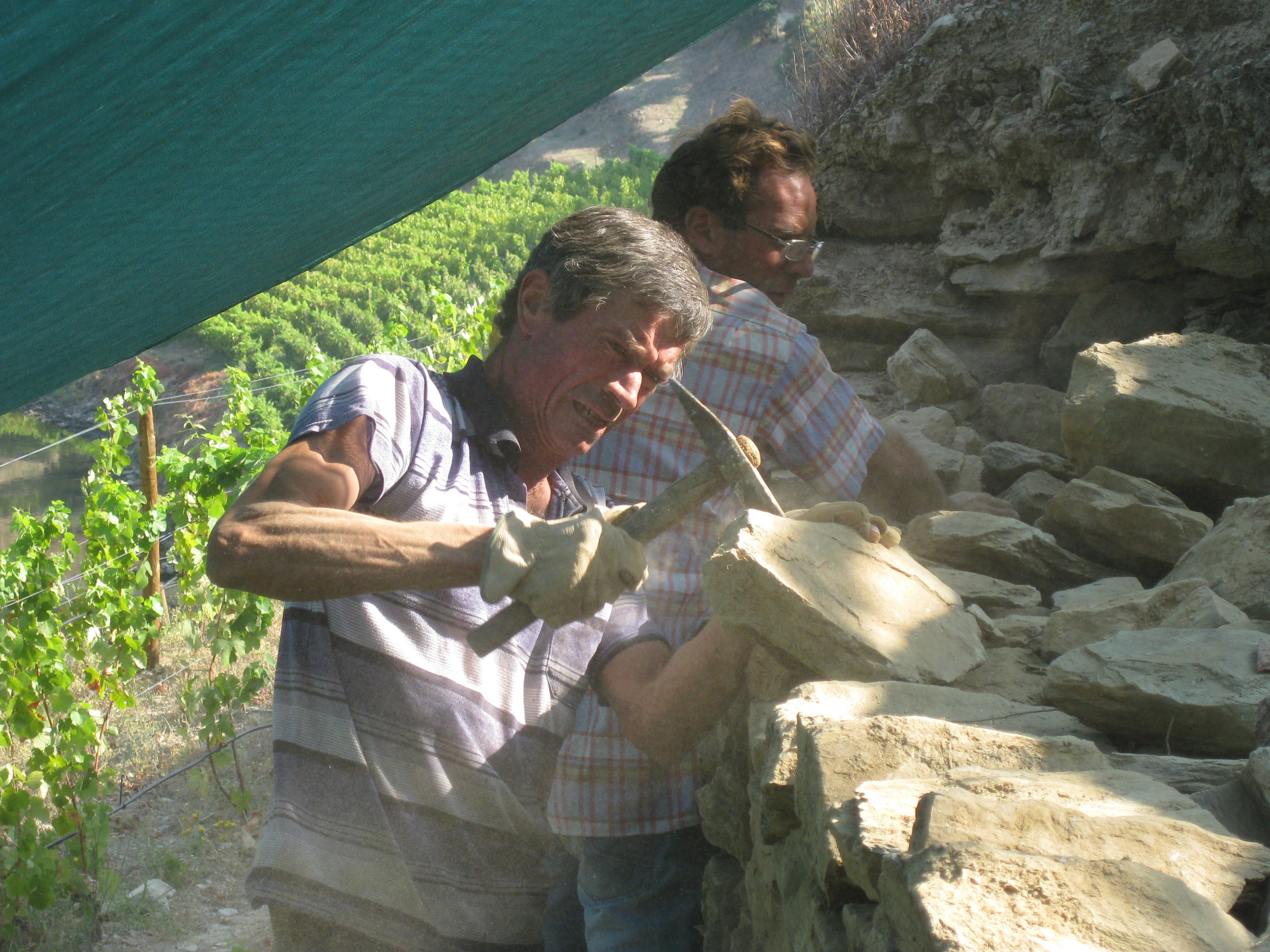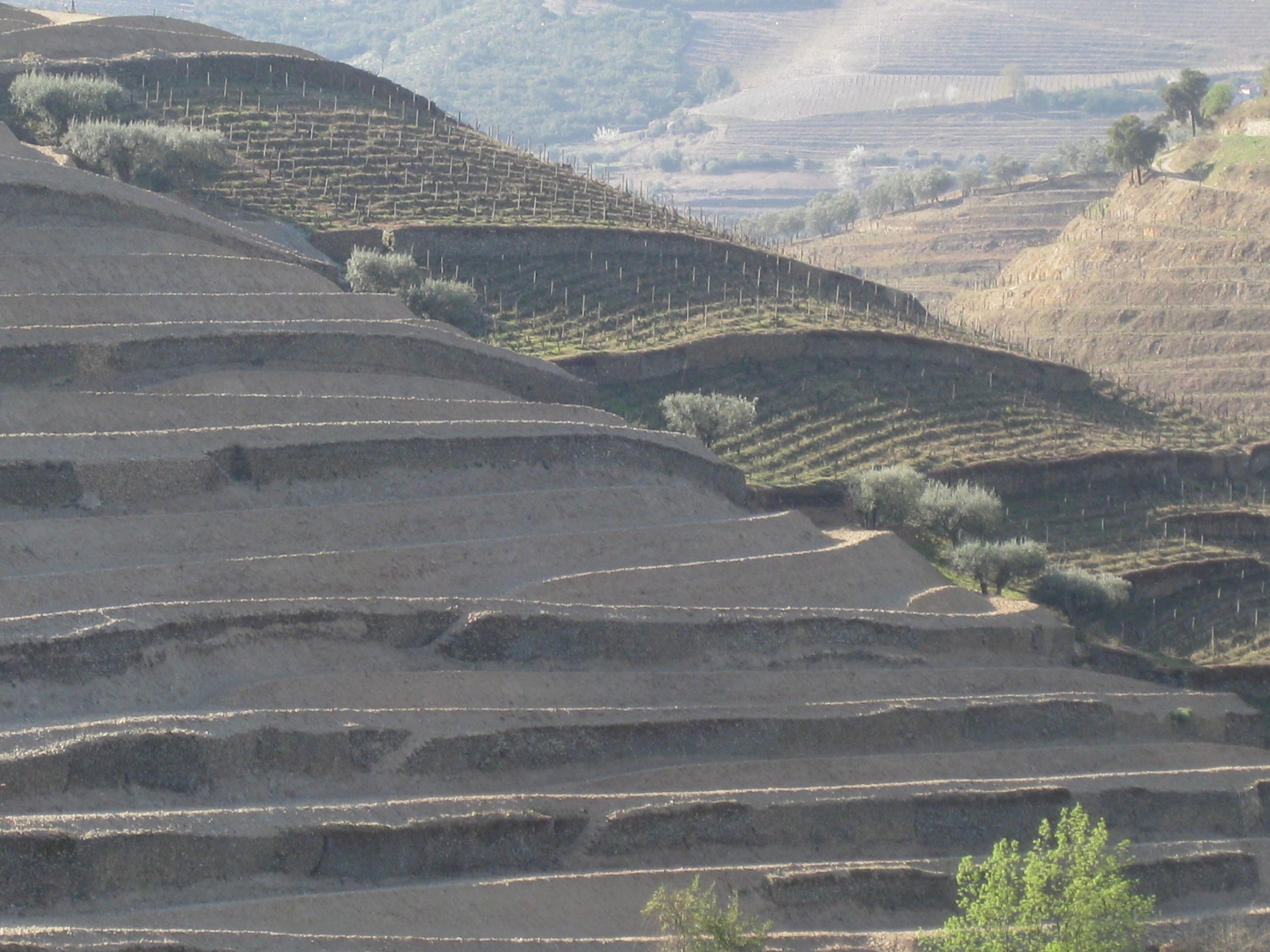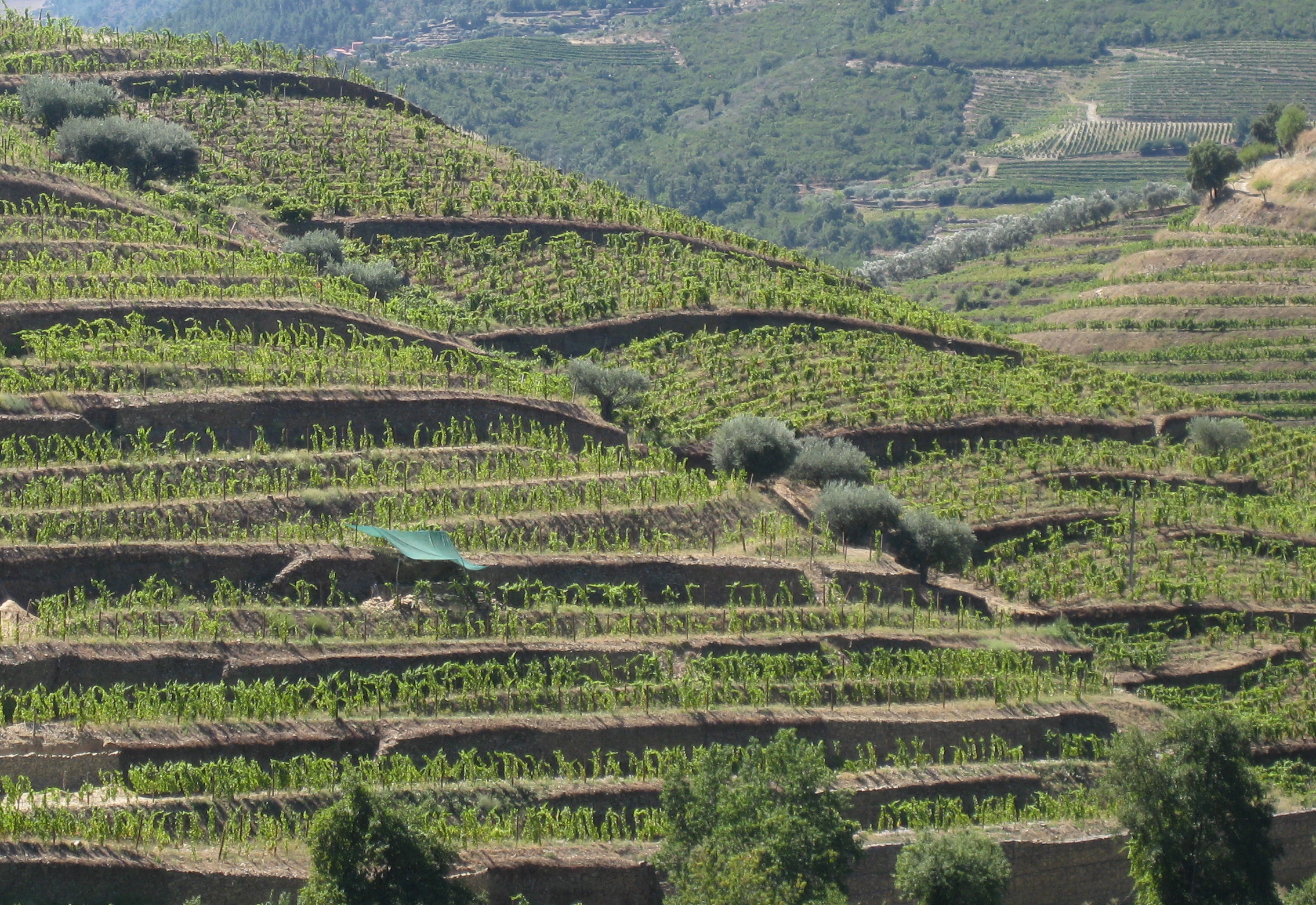Patches of rainfall interrupting gorgeous days of Douro sun add challenges to a harvest that started ahead of usual 5 September harvest date and ended later on 26 September. Even though the Douro region remains within the 30-yr average of both precipitation and temperature, slightly cooler July and August resulted in grapes ripening later than in the past several years. The quality looks very good. This year the landscape has remained greener and no one has heard about the terrible Portuguese wildfires that normally plague the hills during the very hot and dry summer months!
20 yr-old daughter Odile and I opened doors during the harvest period to a 15-seat “Bistro O.K.” (Bistro Odile and Kay !) under a pergola overlooking our scenic Tedo river. What better way to spend the day after a tour of our property and a tasting of our ports, Douro DOC red wines and olive oil. The Portuguese/Californian/French fusion cuisine (what would you expect ?!) was a novidade for the quinta and our guests were thrilled to dine sur place while the harvest was underway. Perhaps to offer as well next year ?
Harvest’s last day is always touching, when according to Douro tradition, the harvest crew, cook, and other workers gather for a little party- with homemade cinnamon-sugar dusted fritas, orange cake bolo and savory meat bolas enjoyed together with, of course, a glass of Quinta do Tedo Porto. The workers prepare a song recounting the harvest and offer a bouquet of flowers to the owners and Vincent and I sing back to them, and in turn, offer a tip ! What a wonderful tradition for all.
Cumprimentos!


